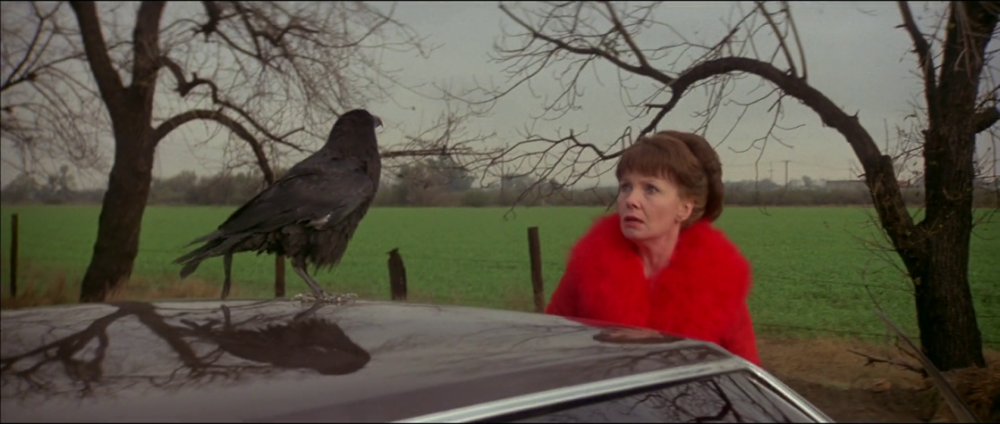 Seemingly full of board meetings and brooding talk of destiny, Damien: Omen II would appear to be the quintessential Carter-era supernatural-horror film. It plumbs the same idiotic religious dread as its 1976 predecessor, with a higher and even more gratuitous body count, though its subtext and thematic elements make it of more than passing interest.
Seemingly full of board meetings and brooding talk of destiny, Damien: Omen II would appear to be the quintessential Carter-era supernatural-horror film. It plumbs the same idiotic religious dread as its 1976 predecessor, with a higher and even more gratuitous body count, though its subtext and thematic elements make it of more than passing interest.
Seven years after the events of The Omen, young Damien (Jonathan Scott-Taylor) is living with adoptive uncle William Holden and aunt Lee Grant, as well as his cousin (Lucas Donat) from Holden’s previous marriage. Holden, the brother of Gregory Peck’s Robert Thorn, is some sort of corporate honcho (though the first film ended with the promise that the son of Satan would soon be pedaling his tricycle around the White House). There’s a great deal of talk — probably more than necessary — about the corporation’s goals and its highly specious plan to feed developing nations. (I got a fine laugh out of the line about “using toxic chemicals to feed the hungry.”)
Damien attends military school (“and lots of funerals,” quipped Michael J. Weldon in his Psychotronic Encyclopedia review), where he meets Lance Henriksen as a shadowy sergeant who encourages Damien to embrace who he is. So does Robert Foxworth as a higher-up in Holden’s company. Where the original gave Damien a female protector in the form of Billie Whitelaw, Omen II furnishes soft-spoken father figures who act for all the world like earnest pederasts. For a while, the movie gainfully plays Damien’s coming-of-age as a metaphor for the hell of puberty — strange new feelings, etc.
As shot by ace cinematographer Bill Butler, and directed by Don Taylor (who took over from Mike Hodges), Omen II has more going on cinematically than its parent film; the compositions make more varied and imaginative use of the wide screen. And the plot is a sly inversion of the old Joseph Campbell template of the boy hero realizing the extent of his powers (the film sometimes plays like a dark mirror image of Harry Potter). Like his opposite number, Damien is conflicted between his human side and his immortal parentage.
However, the film vacillates between being a political/personal drama — the making of the prince of darkness — and being a litany of catastrophes. Too often, characters are introduced and then loudly killed off within a span of minutes. In the first film, Damien’s beast minion was a black dog; here it’s a crow, which proactively pecks out the eyes of a nosy reporter but otherwise just shows up whenever another “accident” needs to happen. The crow shows up a lot. In the most flamboyantly grisly number, a pre-Designing Women Meshach Taylor shows us what his intestines look like — possibly as much of a watermark for major-studio gore* as The Omen‘s decapitation was. It could’ve been more interesting, more intellectually engaging; the whole series could’ve. Franchise producer Harvey Bernhard might’ve framed the saga as a dark commentary on religion and power. Instead it’s just squalid pulp. Fun as such, I suppose, but horror fans deserve better.
* Perhaps Catch-22 scooped it on this score.

